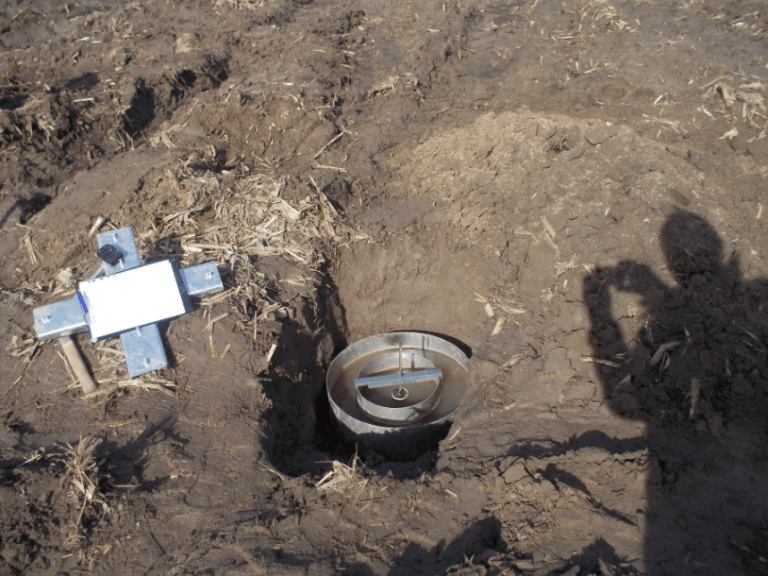Pump testing – Infiltration testing
Pump testing, in the context of the preparation of a soil survey or remediation, is executed in order to determine the permeability of the soil. The measurement results are calculated from the grain-size distribution in addition to the values. A comparison provides a more substantiated assessment of the permeability of the soil. There are various methods for conducting pump testing in a soil survey or remediation, or to estimate the behaviour of the groundwater during a groundwater drawdown. The choice of the type of pump testing is determined in function of the work that will be executed.
Infiltration testing is determined earlier in the context of the establishment of the infiltration capacity of the soil for rainwater. In the case of construction projects, which usually always require an earthmoving survey, the infiltration surface of the soil is reduced by the placement of new buildings and non-permeable hard surfaces. The government also requires special facilities in order to prevent the risk of flooding. For the design of these facilities (infiltration basins,…), it is important to know the infiltration capacity of the soil.

Envirosoil can execute various infiltration tests in function of customer demand and in function of the desired depth:
- For shallow infiltration tests (up to 1-meter depth), the double ring infiltration test is usually executed.
- For deeper infiltration tests, a borehole is made and, with or without the installation of a monitoring well with a filter over a given depth range, the speed of the seepage (the speed of the subsidence) of poured water is recorded.
An infiltration speed or permeability of the soil can be calculated from the measurement data.
When conducting infiltration tests, it is also advisable to simultaneously draw up a drilling profile of the soil and determine the groundwater level and, if necessary, execute the measurements for a longer period, in order to record fluctuations in the level.
